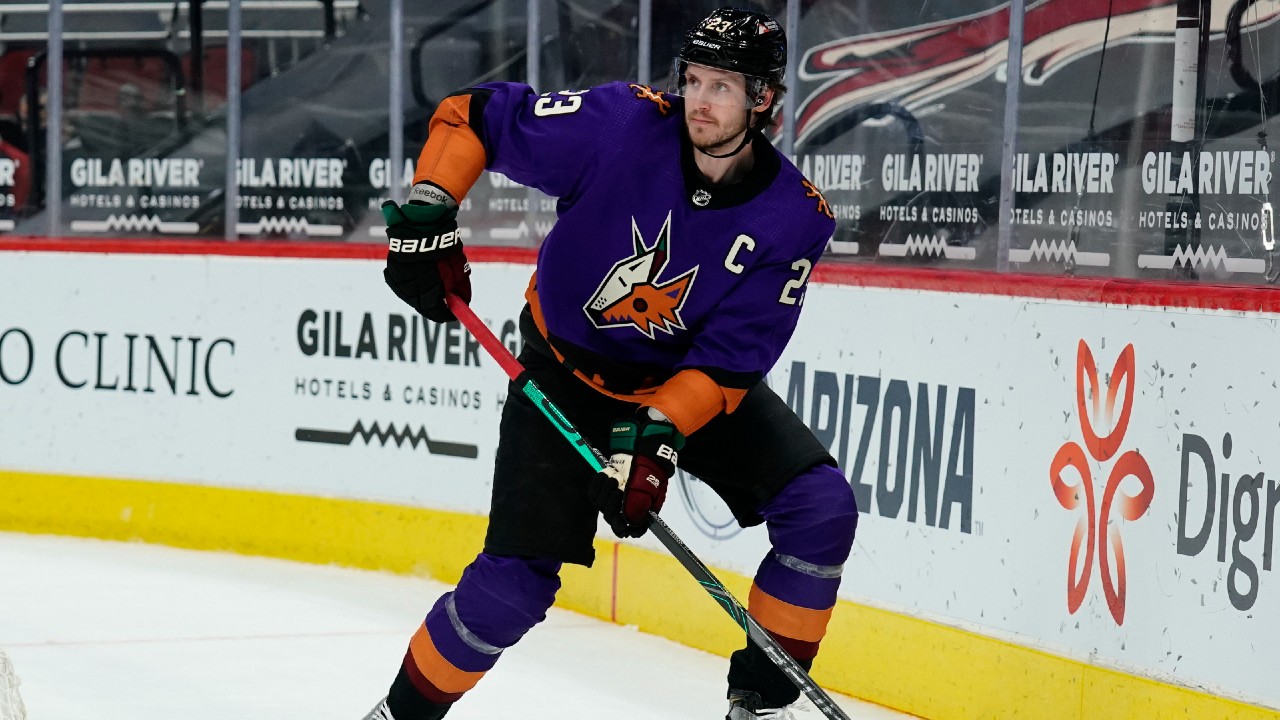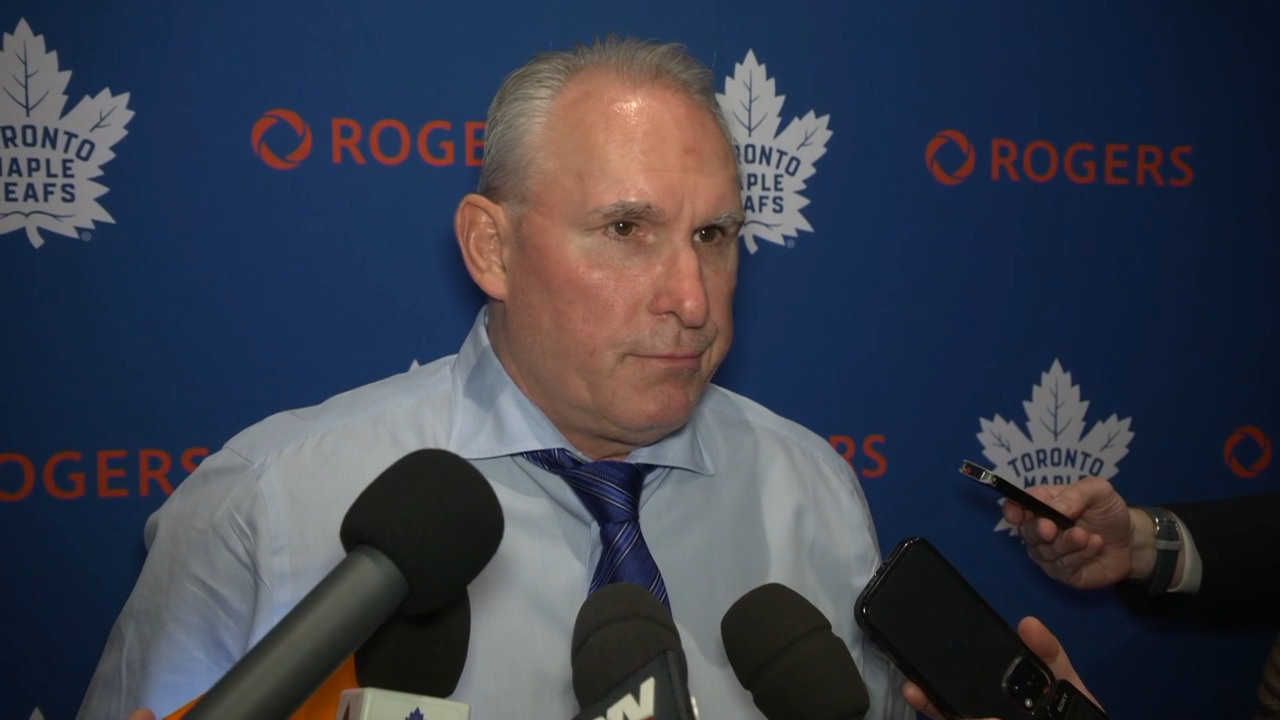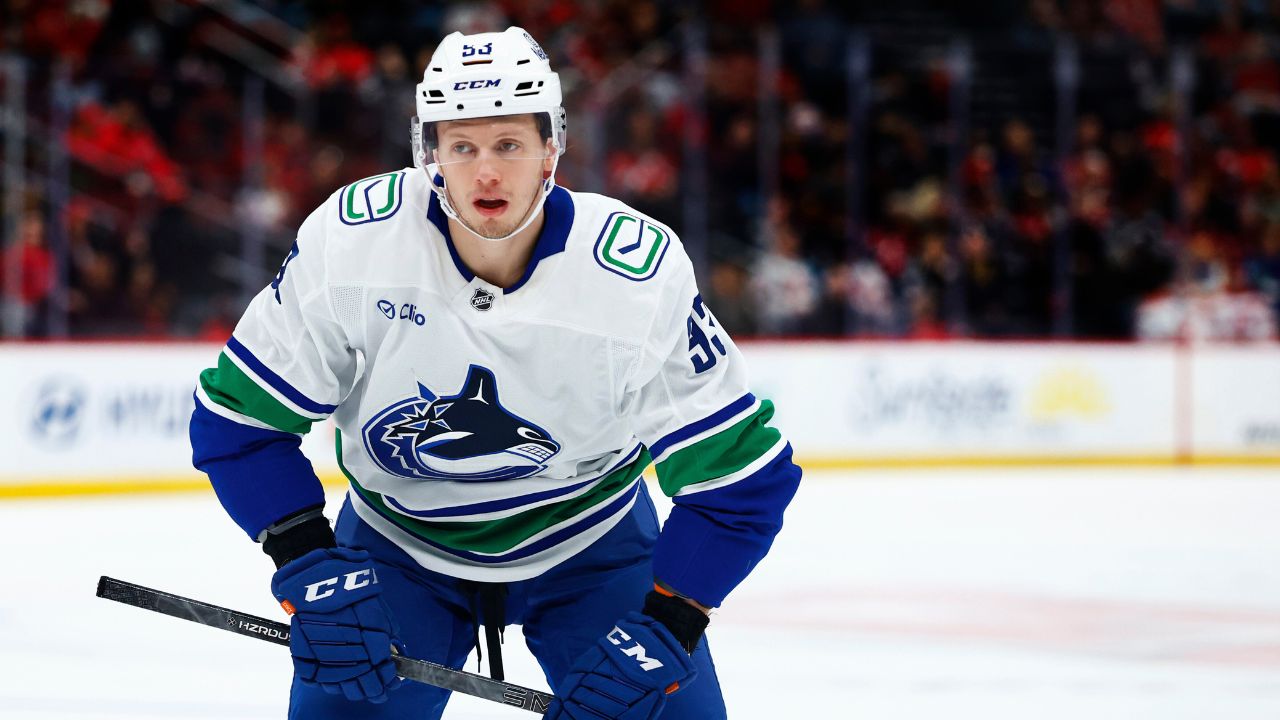
VANCOUVER – After years of trying to manage their increasing salary-cap pain, the Vancouver Canucks opted for major surgery on Friday and amputated their spending mistakes in a blockbuster trade with the Arizona Coyotes.
They added a first-pairing defenceman in Oliver Ekman-Larsson and top-six winger in Conor Garland without surrendering a significant player from their roster, instead bundling the final season of bad contracts general manager Jim Benning had given years earlier to Loui Eriksson, Antoine Roussel and Jay Beagle and dumping them on Arizona.
The cost of this salary-cap cleansing and lineup upgrade was the ninth pick in Friday’s National Hockey League entry draft, a second-rounder next season and the Canucks’ willingness to absorb most of the $49.5 million owed to Ekman-Larsson, a 30-year-old who will have to overcome aging and science if he’s to be worth anything close to his cap hit by the end of his contract.
The ninth pick was guaranteed to secure an excellent prospect capable of helping the Canucks on an entry-level salary in just two or three years.
But Garland, a restricted free agent who had 39 points in 49 games last season, is a 25-year-old dynamo who is still getting better and should fill the void left by Tyler Toffoli when the former Canuck was allowed to leave in free agency last October without even an offer from Vancouver.
Garland for the ninth-overall pick is a calculated risk, a hockey trade that could end up helping both teams (as all trades are intended to do) like the deal the Canucks made for Bo Horvat in 2013 when former GM Mike Gillis traded goalie Cory Schneider to the New Jersey Devils for the ninth pick.
The Devils got a franchise netminder, and the Canucks used the pick to select their future captain, who has become a franchise cornerstone.
That’s a hockey trade.
The obvious risk in Friday’s deal is the money the Canucks took on with Ekman-Larsson in return for escaping the suffocating effects of Eriksson ($6 million cap hit), Roussel ($3 million) and Beagle ($3 million).
But that self-inflicted pain had only a year remaining — $12 million of total cap space that was going to prevent Benning from making the major, immediate improvements he wanted for a Vancouver lineup that regressed badly during this past pandemic season.
“What he’s going to bring to our whole team is going to be, it’s going to be immense,” Benning said of Ekman-Larsson’s impact on and off the ice. “We didn’t take lightly moving that ninth pick overall in the draft. That was a hard decision to make. But we just looked at everything that we could accomplish by doing it and so we made the decision as a hockey-ops group to go ahead and do it. Part of this whole reasoning is that we’ve got to take the next step as a team and we have to make our team better going into next season.”
With Ekman-Larsson, Garland and new third-line centre Jason Dickinson, acquired in a pre-expansion trade with the Dallas Stars — all added without losing a significant player — Benning said Friday he believes the Canucks are a playoff team.
But the organization is also on the hook for six more years of Ekman-Larsson, whom the Coyotes grossly overpaid under a previous regime because, symbolically, the weakling franchise had to show fans it could keep its best player.
Ironically, it’s possible that the Canucks’ pre-free-agency waltz with the Coyotes over OEL last fall contributed to the team’s astoundingly delayed action and ultimate failure on the Toffoli file.
But Benning clearly believed that acquiring the Swedish defenceman would be a game-changer for the Canucks, and nothing the GM saw in the ninth months since then dissuaded him.
[radioclip id=5175902]Ekman-Larsson is a smooth-skating workhorse who averaged 23-and-a-half minutes during his 11 seasons with the Coyotes, plays in all situations and just about guarantees 40 points over a full season. But even if he was the best player on mostly awful teams during his time in Arizona, he was never one of the NHL’s top-10 defencemen despite his top-10 salary. And his advanced stats, generally positive relative to teammates the last decade, are already starting to dip.
The Coyotes’ willingness to retain $990,000 or 12 per cent of Ekman-Larsson’s cap hit — Vancouver reportedly wanted 20 per cent retention, Arizona none — lessons the financial hit a little but still leaves the Canucks a cumulative charge of $43.56 million over six years.
The savings on the defenceman’s $7.26-million cap hit next season versus what the Canucks owed Eriksson, Roussel and Beagle is $4.74 million, which may not cover the new salary on Garland, who is a restricted free agent.
But Garland is elated to join the Canucks. And his new teammates will be thrilled to have him and Ekman-Larsson in the lineup next season, especially since the team surrendered little in player capital to get them.
“They already have a great group of guys there, and I feel like I’m at a pretty good place where I can just come in and try to help them be a little bit better,” Garland told reporters from his Boston-area home. “For me, I feel like I’m just starting. I’ve only played 160 games and last year was the first year I really felt comfortable.
“I feel like there’s a lot more in my game. To be able to play with a guy like (Elias) Pettersson or Horvat is going to help a ton. There’s a lot of excitement now. I mean, it’s really kind of the first time I’m going into the year where you know you’ve got a real shot at competing for a Stanley Cup. It feels like we’re coming in with some high expectations, and me and Oliver are really excited to be able to go in and play with this young core and help them get better.”
Undoubtedly, Garland and Ekman-Larsson will make the Canucks better next season. But as with most major surgeries, there is a long-term risk in this for the Canucks.
Benning made his team better, but he may still lose the trade.




